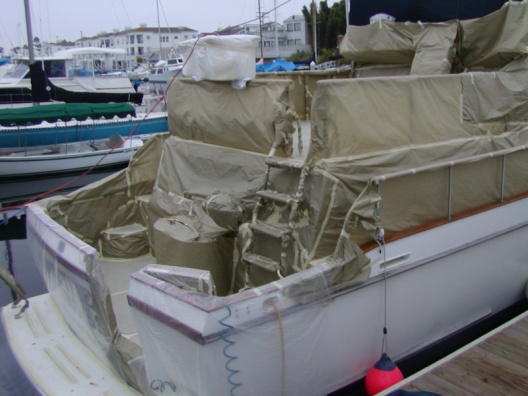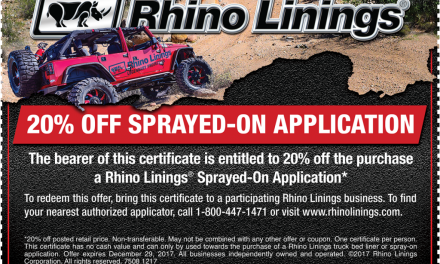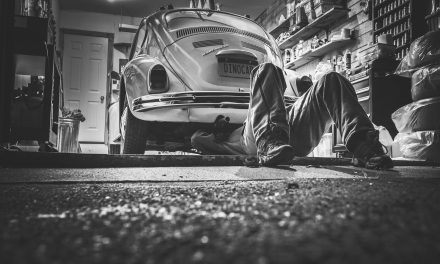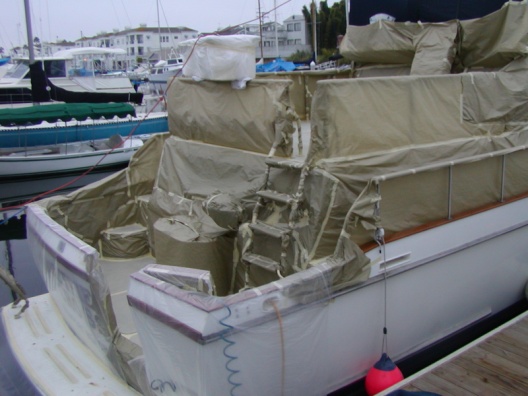
Rhino Linings® isn’t just for vehicles on wheels. Find out how we can use different Rhino products on a client’s boat to create a non-skid surface that’s also protected against the damaging effects of UV light. During the spring and summer seasons, there’s certainly no shortage of work for a Rhino Linings applicator, whether it’s on land or water.
Problem
The owner of a 50’ pleasure-cruising yacht needed to recoat and repair its worn deck. After 20 years, the old fiberglass non-skid features had worn away leaving a smooth, slippery surface. The customer knew that it was dangerous for all of his passengers. He needed an attractive, non-skid surface that would balance softness and flexibility under bare feet.

No watercraft is safe from the elements and general wear and tear. Make sure your client’s boat is protected from the damaging effects of UV light and that their passengers are able to safely walk on surfaces without the risk of slipping and falling overboard.
During the spring and summer seasons, there’s certainly no shortage of work for a Rhino Linings® applicator, whether it’s on land or water. Find out how Rhino Linings applicators use different Rhino products to create a non-skid and UV-protected yacht deck.
Problem
The owner of a 50’ pleasure-cruising yacht needed to recoat and repair its worn deck. After 20 years, the old fiberglass non-skid features had worn away leaving a smooth, slippery surface. The customer knew that it was dangerous for all of his passengers. He needed an attractive, non-skid surface that would balance softness and flexibility under bare feet.
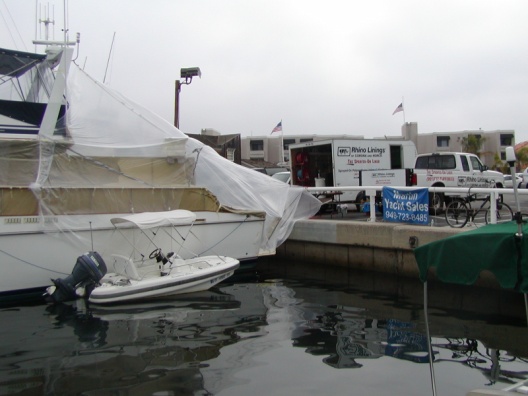
Solution
The owner of the yacht wanted a durable, non-slip coating and he sought help from a Rhino Linings applicator.
The applicator recommended Primer 251 because of its ease of application and its volatile-free properties. For the soft feel properties and easy color matching, he chose TuffGrip 11-90 coating and topped it off with a UV coating.
Due to windy coastal conditions at the dock, the entire yacht had to be covered to prevent overspray and to protect the surface from excessive moisture and salt contamination.
All surfaces not being coated were masked off and protected. The surface area was pressure washed and allowed to dry. Then the fiberglass gelcoat surfaces were sanded to the point where the glass fibers started to loosen. This gives the primer a mechanical bond to ensure good adhesion.

As a final step to provide long-term UV protection, the applicator applied a UV Topcoat at 4 mils and color matched it to the elastomeric polyurethane layer. The UV Topcoat is a solvent-based, two-component, aliphatic polyurethane.After allowing the surface to dry overnight, the applicator applied Primer 251 at approximately 3 mils.
They chose Primer 251 because of its resistance to salt spray and hydrolysis. TuffGrip 11-90 polyurethane coating was then applied at 85 -125 mils (2-3 mm) in a single coat, multi-pass technique. This allowed the applicators to coat the entire deck area within a matter of minutes.
Results
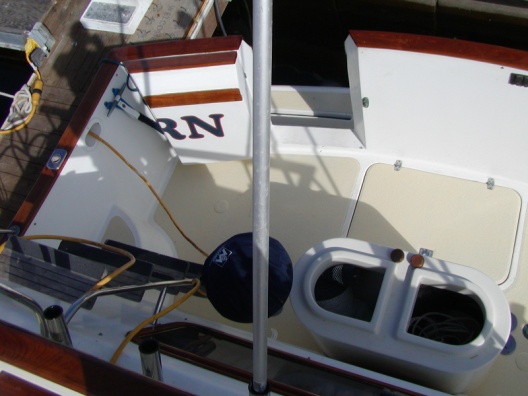
The applicator made everything ship-shape for this yacht owner. By using Rhino Linings primer and polyurethane coatings, the applicator created a flexible and aesthetically-pleasing new deck surface over the aged polyester fiberglass that provides extended service life and long-term durability.
Seasonal Work to be Had
Rhino Linings is more than just for trucks. As we transition to summer, be prepared for new jobs by brushing up on your product knowledge and application techniques. Need help determining what product to use for a new job? Contact the Rhino Linings technical team.

